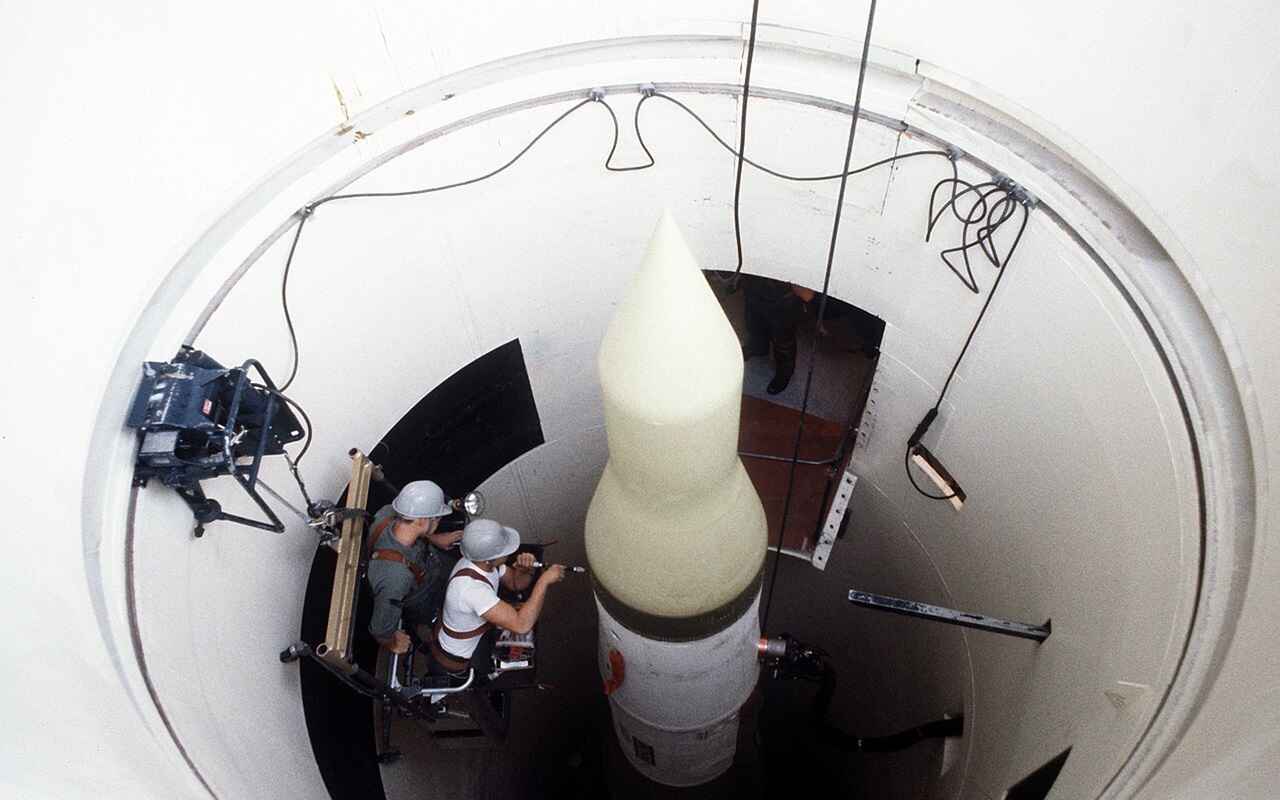Since the invasion of Ukraine, the Kremlin appears to have made conventional weapons its greater priority—at least for now.
Last October, the Kremlin carried out an exercise that put its nuclear forces to the test, while Russian President Vladimir Putin has repeatedly threatened the use of nuclear weapons—going so far as to lower the nuclear threshold under which conditions Russia would employ weapons of mass destruction.
Moscow’s new doctrine would allow it to respond with nuclear weapons even to a conventional attack if that nation carrying out the attacks is supported by a nuclear power. Essentially, the Kremlin’s new doctrine claims that an attack from a non-nuclear state supported by a nuclear state—clearly a reference to Ukraine striking inside Russia with American weapons—would be viewed as a joint attack on Russia. Indeed, that change was made just as the Biden Administration gave the green light to Ukraine to fire long-range U.S.-made missiles into Russia.
At the time, President Donald Trump was critical of that decision, blaming Biden for recklessly escalating the conflict for no gain. However, so far, he has not spoken publicly about the decision, or indicated whether he would reverse it or leave it in place.
A Focus on Conventional Weapons
Despite Putin’s nuclear saber rattling, the reality is that Russia has been forced to turn its focus away from increasing its nuclear arsenal and back to its conventional weapons.
According to a study by Carnegie Politika, Moscow has shifted its rearmament strategy away from the “modernization of its strategic nuclear forces,” which included “retiring missiles and carriers developed in Soviet times” in favor of newer Russian-designed platforms. Instead, last year, “Russia’s nuclear forces stopped being updated.”
The report observed that 88 percent of Moscow’s current Strategic Missile Force now consists of “modern weapons” made in the post-Soviet era, while only 12 percent dated back to 1991. However, the figures for the end of 2024 were identical to those in 2023, meaning that Russia had effectively paused progress on phasing out Cold War-era weapons altogether.
“Unsurprisingly, the Russian authorities made no mention of this in their statements last year. Instead, they paid a lot of attention to the medium-range hypersonic missile of which Putin is so fond: the Oreshnik, which was tested in combat conditions in November,” Carnegie Politika added.
The Reality of the Situation
Since launching its unprovoked invasion of Ukraine nearly three years ago, Russia has faced sanctions that have impacted the development of its more advanced weapons. It has clearly put a focus on the Oreshnik medium-range missile, but likely at the expense of other platforms.
The once highly touted T-14 Armata main battle tank (MBT) is hardly discussed, and while the Kremlin continues to praise the Sukhoi Su-57 (NATO reporting name “Felon”) fifth-generation multirole fighter, it has struggled to produce the aircraft in significant numbers. Moreover, Russia has been unable to reach production levels of any of its aircraft or tanks to replace battlefield losses.
It is thus not the least bit surprising that the nuclear arsenal is on the back burner.
The Tupolev Tu-160M White Swan (NATO reporting name “Blackjack”), a nuclear-capable long-range strategic bomber, is among the platforms specifically noted in the Carnegie Politika report. Moscow was supposed to see two of the bombers added to its arsenal last year, but this appears to have been delayed. An additional two Tu-160Ms were scheduled for delivery this year, but as the report noted, “That does not look likely either.”
Other programs are also just as bogged down, perhaps even worse.
While the United States Air Force continues to see slow but steady upgrades of its Boeing B-52 Stratofortress—including new engines that will keep the bombers flying for decades to come—Russia’s Tupolev Tu-95 (NATO reporting name “Bear”) has made little to no progress on a similar modernization effort. “The program, launched in 2018, was supposed to cover up to thirty-five aircraft, including their navigation and information display systems, onboard defense systems, radars, and engines,” the report stated. “A standout feature of the new version of the aircraft, called the Tu-95MSM, is the ability to carry Kh-101/102 missiles.”
As of now, none of the modernized bombers have been delivered.
The sanctions have made it difficult for Russia to source the components. Moreover, even as China, Iran and North Korea are aiding Russia’s war effort, those countries can’t (or won’t) help when it comes to these upgrades.
Still a Nuclear Threat
None of this means that Russia isn’t still a capable nuclear power. Indeed, the country has around 1,710 active deployed nuclear warheads, according to a November 2024 Congressional Research Service report. But since the invasion of Ukraine, the Kremlin appears to have made conventional weapons its greater priority—at least for now. That’s unlikely to change while the conflict continues, and probably will remain so for some time afterward.
As has been reported, Russia’s tank fleet has been destroyed. It has seen its Aerospace Force decimated. It will require years to rebuild both—and the nuclear arsenal modernization will likely continue to be put on the back burner. Rather than worry about Russia modernizing its aging nukes, the West may be better off worried that Russia doesn’t pay attention enough.
About the Author: Peter Suciu
Peter Suciu is a Michigan-based writer. He has contributed to more than four dozen magazines, newspapers, and websites with over 3,200 published pieces over a twenty-year career in journalism. He regularly writes about military hardware, firearms history, cybersecurity, politics, and international affairs. Peter is also a Contributing Writer for Forbes and Clearance Jobs. You can follow him on Twitter: @PeterSuciu. You can email the author: [email protected].
Image: Wikimedia Commons.
